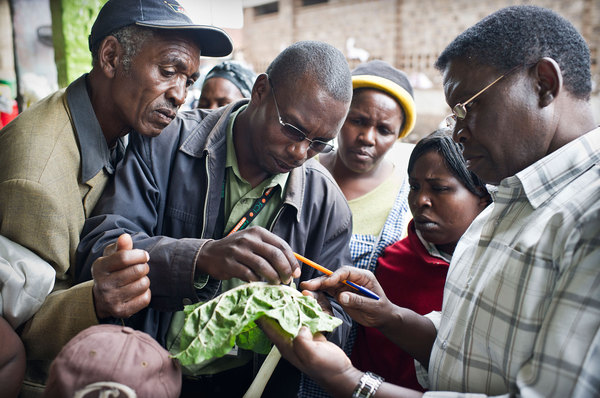CPM-12 adopts a record number of new tools for protecting plants from pest spread
This week we’ve been reporting from the 12th session of the Commission on Phytosanitary Measures, which successfully drew to a close, having produced concrete tools to support plant protection through the adoption of 25 International Standards for Phytosanitary Measures (ISPMs). Under the World Trade Organization’s Agreement on the Application of Sanitary and Phytosanitary Measures (SPS…
The benefits and challenges of protecting plants from pest spread – some vivid examples from CPM-12
The 12th session of the Commission on Phytosanitary Measures (CPM) featured a full day of talks covering a range of topics related to plant health. The day began with a session on the benefits (and also the challenges) of implementing the International Plant Protection Convention (IPPC) and the International Standards for Phytosanitary Measures (ISPMs). A…
Landmark Phytosanitary meeting CPM-12 kicks off in Incheon, Republic of Korea
The 12th Session of the Commission on Phytosanitary Measures opened today in Incheon, Republic of Korea. This is significant as it is the first time that the event is being hosted outside of Rome by a member country of the International Plant Protection Convention. This year’s theme is “Plant Health and Trade Facilitation”, so this topic…
“Stop those pests!” – Great Success for CFS43 Side Event
Reblogged from the IPPC blog. The side event was co-organized by the Secretariat of the International Plant Protection Convention (IPPC) and the Department of Agriculture and Water Resources of Australia with a manifold success. The side event was held during the 43rd Session of the Committee on World Food Security (CFS43) on 18 October 2016,…
Kenya’s Phytosanitary Successes and Challenges
Contributed by Roger Day, CABI An “experimental item” added to the agenda of the 2014 Commission for Phytosanitary Measures (CPM) was reports of successes and challenges in implementing the International Plant Protection Convention (IPPC). Each year a couple of countries (or Contracting Parties in the jargon) give a brief presentation, and first up at this year’s…
New initiative to support phytosanitary surveillance
Contributed by Melanie Bateman, CABI As the standard setting organisation for plant health, the International Plant Protection Convention (IPPC) has long had an active, member driven programme to produce International Phytosanitary Measures (ISPMs). Moving forward, the IPPC is putting more and more emphasis on supporting the implementation of the ISPMs and the Convention itself by…
CPM11 kicks off at the FAO in Rome
Contributed by Melanie Bateman, CABI On Monday 04 April 2016, the 11th of session of the Commission on Phytosanitary Measures (CPM) kicked off in Rome. The meeting began with opening remarks from Mr. Daniel Gustafson, FAO Deputy Director General of Operations, and a hearty welcome to the new IPPC Secretary, Mr. Jingyuan Xia.
And so, farewell to CPM10
Contributed by Roger Day, CABI With a delicate tap of her wooden gavel, chairperson Ms Kyu-Ock Yim signalled adoption of the report of the 10th Session of the Commission on Phytosanitary Measures (CPM10) late on Friday afternoon. Delegates applauded; with satisfaction, with relief, in appreciation of the chair? Perhaps a bit of everything. Ms Yim…
Electronic noses and other pest detection tech at CPM10
Contributed by Roger Day, CABI Some of the latest gadgets and gizmos for detecting plant pests were demonstrated and discussed at the 10th Session of the Commission on Phytosanitary Measures on Thursday. Inspecting for pests, whether in the field or in consignments, can be like looking for the proverbial needle in a haystack. So anything…
Beware! Pests on the high seas
Contributed by Roger Day, CABI If you put all the shipping containers in the world end to end, the line would go round the world 5 times. So a problem with a very small proportion of them is still a pretty big problem. One such problem is that when a container is being packed with…



